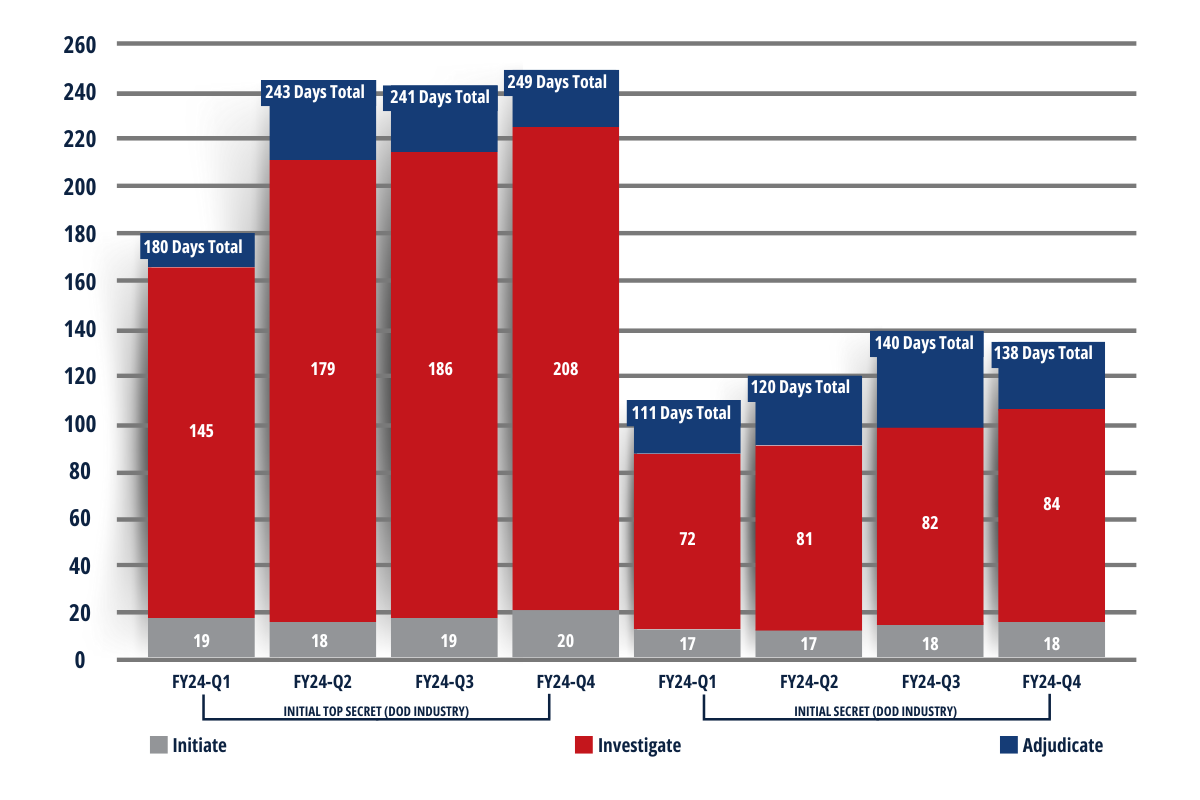Security clearance processing times remain a critical benchmark for establishing the overall health and effectiveness of the personnel vetting process. Delays in clearance processing times aren’t just annoying for applicants, they typically mean missed revenue for industry when it comes to completing cleared work and adverse readiness and ability to accomplish the mission for government.
The first part of the Trusted Workforce 2.0 effort centered on decreasing the significant backlog in pending cases and reducing overall security clearance processing times. As the personnel vetting reform effort enters phase three of its overhaul, it seems to be back to basics – or back to basic issues – as security clearance processing times increase for the Defense Counterintelligence and Security Agency (DCSA) and the inventory of pending cases rises above baseline.
In the fourth quarter of Fiscal Year 2024, average security clearance processing times for Top Secret security clearance applicants was 249 days, and 138 days for Secret security clearance applicants. These are just DoD/Industry timelines, and reflect the fastest 90% of all applications.
*Source: NISPPAC
Slower processing times and increasing backlog is a problem the government is aware of, and the latest update from the Performance Accountability Council Program Management Office (PAC PMO) noted DCSA is implementing a new tiger team strategy to help it tackle pending inventory and complete cases closer to benchmarks. The report noted that the tiger team would identify the “root cause, develop mitigation measures, and oversee those measures through implementation.” It stated future updates would include information on benchmarks and efforts identified.
The approach is not incredibly dissimilar from the approach taken by the National Background Investigations Bureau (NBIB) when it sought to reduce clearance processing times and get the program on track. It sought out business transformation strategies with the aim of reducing redundant effort. Regional hubs and surge strategies looked to align resources with high-inventory areas.
It’s unclear what business transformation strategies will be identified, and where changes need to be made to improve upon the process. What is clear is that applicants are feeling the effect of slower clearance processing times.





